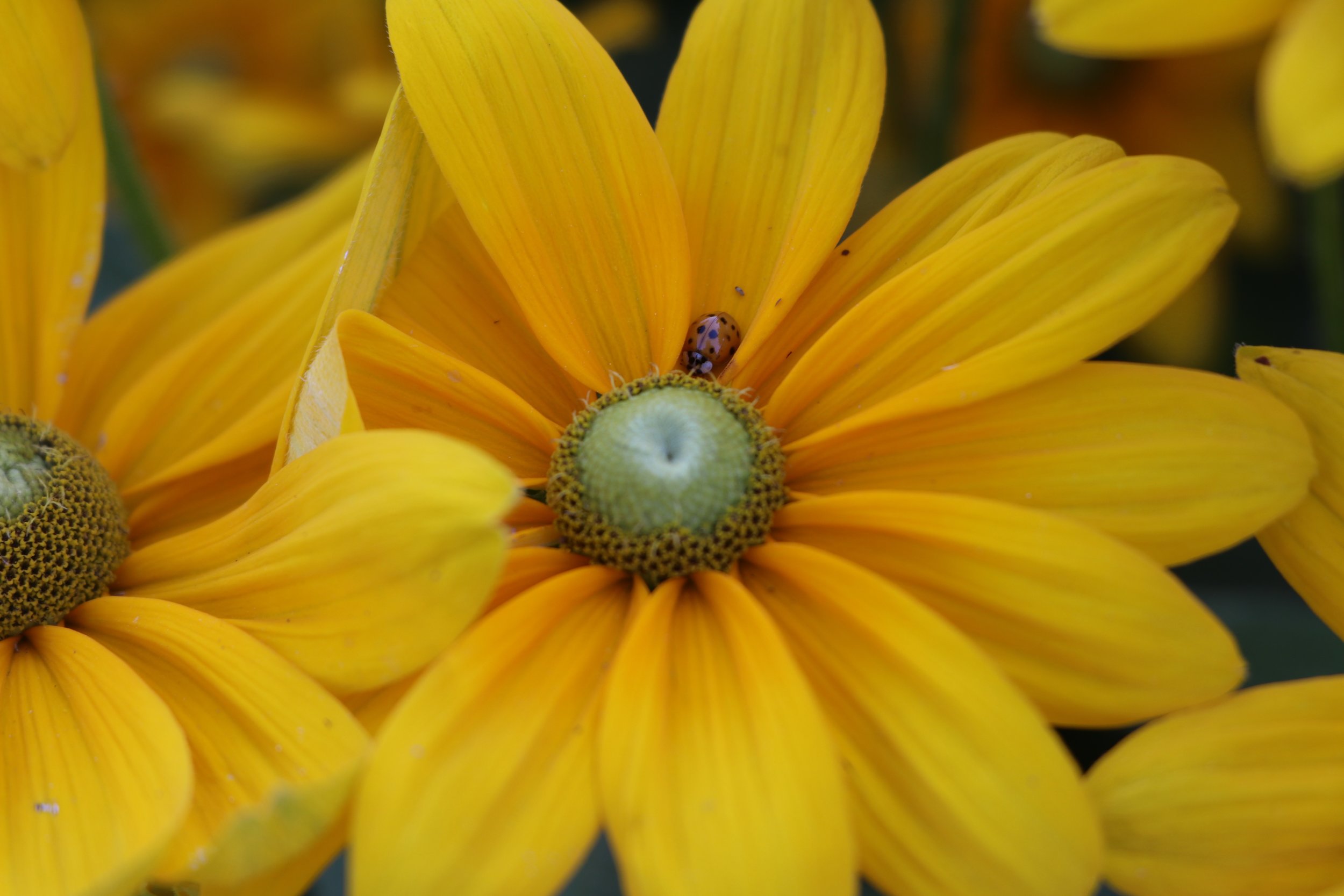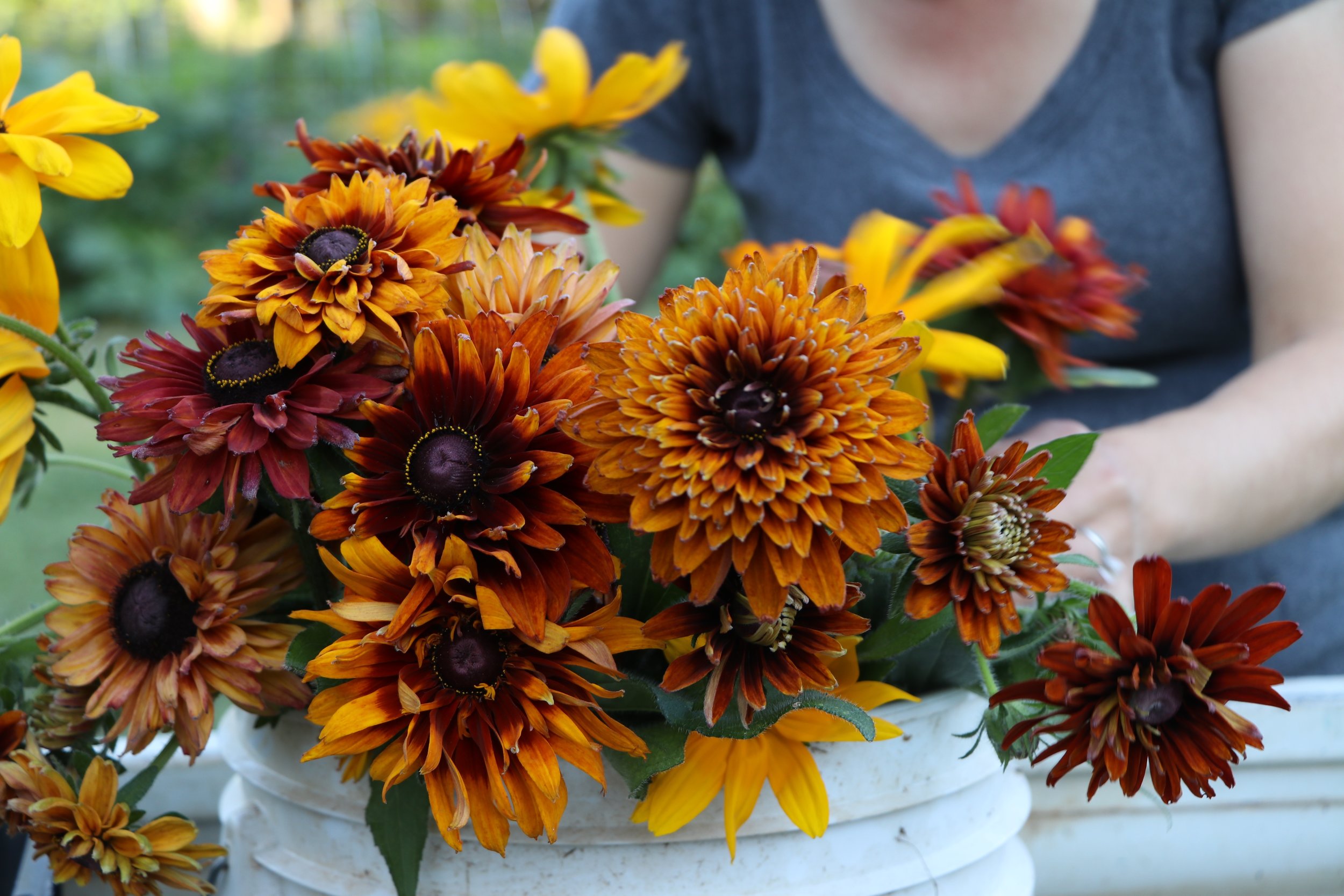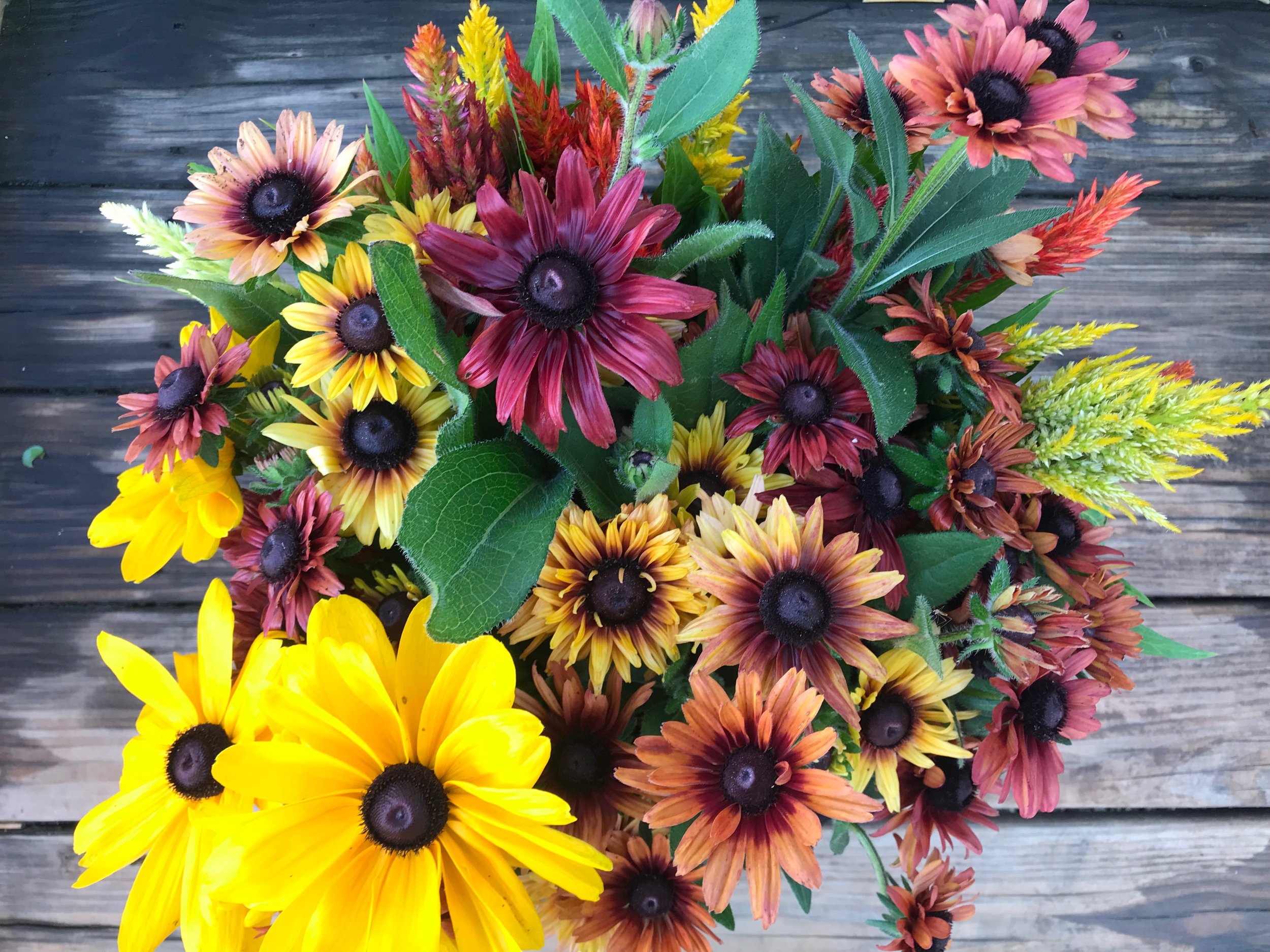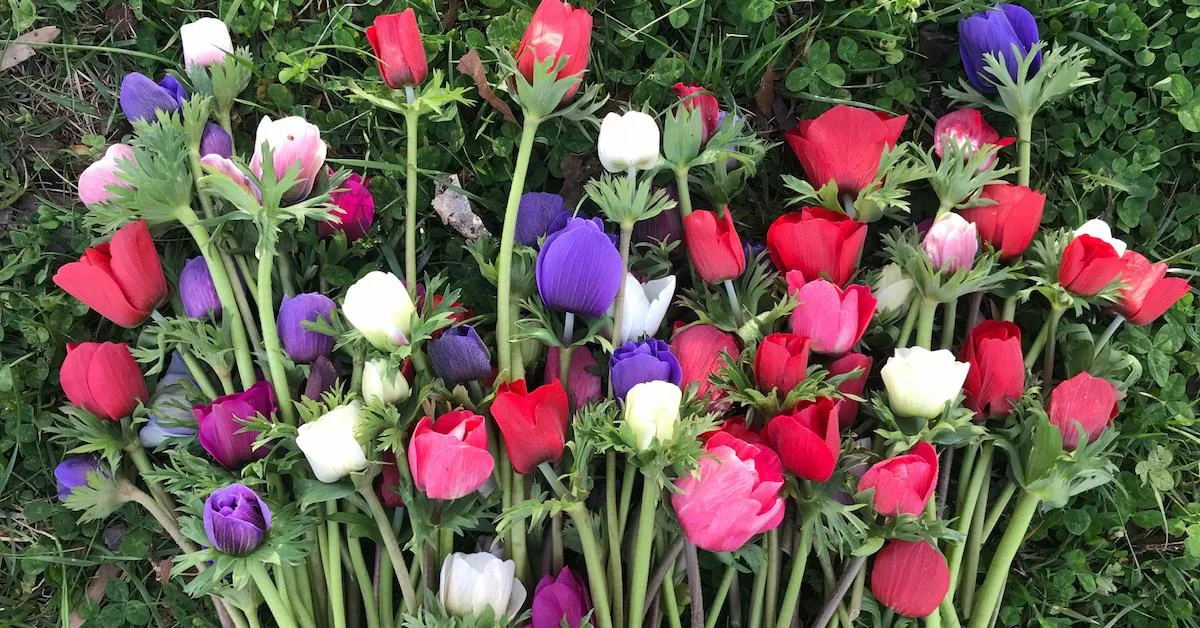Growing Flowers that Attract Bees
Many perennial plants can be added to your cut flower farm or garden that provide various benefits to your operation. From diversifying offerings by bridging gaps between spring bulbs and summertime annuals to adding new interest to seasons in which harvests might become slightly repetitive from your fields, their blooms are valuable crops for farmers markets, florist sales, and wedding designs.
One of the most significant benefits of growing the specific cut flower perennials that I highlight here is the diversity of wildlife that they attract – pollinators, beneficial insects, songbirds, etc. A diverse ecosystem is a healthy ecosystem and pollinators are especially important for vegetable gardens and farms. While flowers do not need pollinators present to bloom (and most often you want to harvest the flowers before they are pollinated for maximum vase life), many of the vegetable crops that we grow at our farm require pollination – cucumbers, summer squash, winter squash & pumpkins, and many different fruits. As there is a shortage of bees in my region, many of my family’s hardware store’s gardening customers are turning to growing flowers to attract these pollinators to their backyards. These are some of our favorite cut flower perennials that bees and other pollinators gravitate towards most at our farm.
Rudbeckia hirta Black-Eyed Susan & Rudbeckia triloba Brown-Eyed Susan
Perennial in zones 3-10 *hardiness varies widely depending on variety, with rudbeckia triloba being the hardiest (zone 3)
Full sun
Height: 3-4’
Spread: 18” clumps
Spacing: 18-24” in garden, can be spaced closer in cut flower fields for annual production
Bloom Time: summer, fall
Rudbeckia commands center stage at our farm in June and July when our plants bloom their little heads off in wild displays of color. Most varieties are yellow, but there are some unique browns and burgundies available, though most often these are less hardy and better treated as annuals. As these plants put up more blooms than I need at one time, I leave them to make seeds and thus attract so many beautiful birds like goldfinches to the farm. Goldfinches are vegetarians and so do not help with icky insect populations but attracting any kind of beneficial species diversifies your ecosystem and has positive ripple effects into other populations around your farm/garden.
Achillea millefolium Yarrow
Perennial in zones 2-9
Full sun
Height: 18-24”
Spread: slowly expanding clump-growth, divide every 3-4 years to maintain blooming vigor
Spacing: 12-24”
Bloom Time: late spring, early summer
Yarrow is one of my absolute favorite flowers. It blooms in a wide array of beautiful colors, puts up dozens of stems over a long harvest window, and is beloved by my florist customers. Clumps can be divided every year or two, which provides us with an additional revenue stream. We sell “shovelfuls” of our most vigorous perennial plants at a discounted price to my farm newsletter subscribers, which helps us cover the labor costs of thinning our patch each year so that we don’t have to start new batches from seed each season. Yarrow is of the best host plants for beneficial predator insects in your garden, such as lacewings, lady beetles, damsel bugs and parasitic wasps.
Veronica spicata Speedwell
Perennial in zones 4-8
Full sun
Height: 1-3'
Spread: clump-growth, divide every few years
Spacing: 18”
Bloom Time: spring-fall, keep deadheaded
There are many kinds of veronica, and I have several years’ experience growing the Veronica spicata “Blue Spires” variety. Clumps grow and expand vigorously, and I have been able to divide and multiply my patch easily. The blooms are daintier than some of the commercially available cut flower veronica but they are a sweet lavender color, and my florist customers enjoy them. I often find our farm’s honeybees crawling all over this crop as it blooms more abundantly than I ever need. I leave lots of the extra blooms on the plant for our hard-working honey producers! I’m also growing pink and white Veronica Skyler plugs from Farmer Bailey (https://www.FarmerBailey.com) for the first time this season and do not yet know about cold hardiness for this series.
Scabiosa columbaria “Butterfly Blue” & “Pink Mist” Pincushion Flower
(also known as Mourning Bride)
Perennial in zones 4-8
Full sun to partial sun
Height: 15”
Spread: slowly expanding clump-growth, can be divided every 3-4 years
Spacing: 18”
Bloom Time Late Spring/Summer
These sweet purple and pink flowers are two of the most popular perennial plants we sell at the garden center at my family’s hardware store. They bloom early and have an abundance of sweet and ephemeral blossoms on 10-12” wiry stems. They will bloom for several weeks in the garden each spring/early summer and sometimes even longer, especially if you continuously remove spent blooms. We see butterflies and bees all over these blossoms in our fields!
*Please note, many scabiosa grown for cut flowers are annuals so be certain which seeds and/or plants you are purchasing. “Fama Blue” and “Fama White” are two other gorgeous perennial scabiosa varieties.
Salvia leucantha Mexican Bush Sage
Perennial in zones 8-10
Full sun best, can tolerate some shade
Height: 4-6’
Spread: 4’ in perennial garden, 24” in annual cut flower fields
Spacing: 18”
Bloom Time: fall
This plant bursts into a rich, velvety purple bloom in the autumn, when much of the garden is tired and winding down as we creep towards winter. I find bumblebees and honeybees to be especially attracted to this plant! One plant can be propagated vegetatively in the spring to make many plants for a large patch at a farm. This can also be done in colder zones, where the plant cannot be left in the garden over the winter. Cut back, dig and store a plant or two in your basement or greenhouse after it finishes blooming in the fall. Take it out, pot up, fertilize, water, and place in a sunny, warm space in the springtime to promote growth for taking cuttings to create your plant stock for the coming season.
Pycnanthemum muticum “Short-toothed” or “clustered” Mountain Mint
Perennial in zones 4-8
Full sun to partial sun
Height: 2-3 ft
Spread: 2ft+ *A relative of culinary mint, it spreads slightly less vigorously but do put it in a place where it is free to roam, not in your main field areas!
Spacing: 18”-2ft
Bloom Time: summer *grown for foliage in arrangements, actual blooms are insignificant; harvest in midsummer
My absolute favorite perennial foliage for attracting hundreds of bees and other pollinators to our garden is this species of Mountain Mint. One 5’x5’ bed can be abuzz with over 100 bees at one time when in bloom!
All varieties of mint attract pollinators when they bloom, though by that time I find the culinary mint foliage to be less useful and more “tired” looking. Mountain mint, on the other hand, has immature stems and will wilt if harvested before it blooms out, which is in July on our farm in NC (Zone 7/8).
I hope that this list inspires even the smallest of backyard growers to add a few of these particular plants to their gardens in the years to come. And these crops are also durable, tried-and-true varieties for many flower farmers and farmer-florists across the country! Happy growing!















